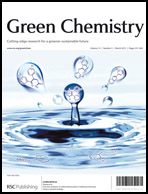The impact of ionic liquid pretreatment on the chemistry and enzymatic digestibility of Pinus radiata compression wood†
Abstract
Compression wood represents a unique challenge for biochemical processing of softwoods to biofuels and chemicals on account of its high


 Please wait while we load your content...
Please wait while we load your content...